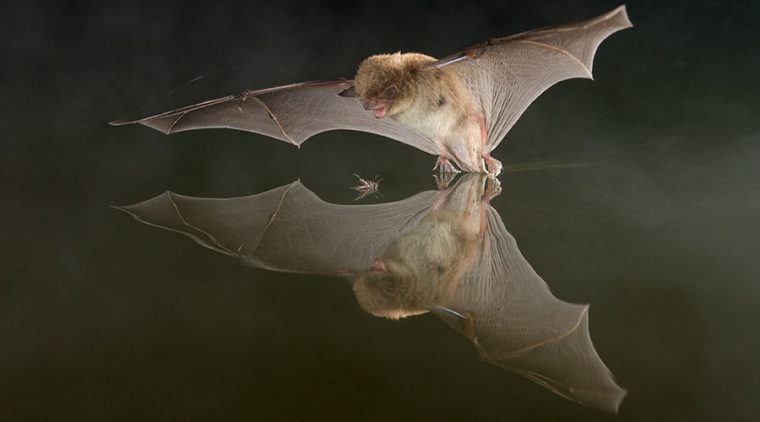Myotis daubentonii
ialtóg uisce
Often called the ‘water bat’, this species is easily recognised in flight by its low, level flight a few centimetres above the surface of lakes, slow-moving rivers and canals. It skims like a hovercraft above the water in search of caddisflies, mayflies and midges, and may even scoop prey from the water surface using its big feet. Many other bats feed over lakes and rivers, but none has such a close association with water as the Daubenton’s. The Daubenton’s bat can even swim if it makes a mistake and ends up in the water.
Daubenton’s bats roost under stone bridges, in ruins, canal tunnels, trees and damp caves.
The Daubenton’s bat annual trend is monitored using a volunteer-based programme – the All Ireland Daubenton’s Bat Waterways Survey. This scheme has been ongoing since 2006 and the Daubenton’s bat trend has been reasonably stable since this time.
